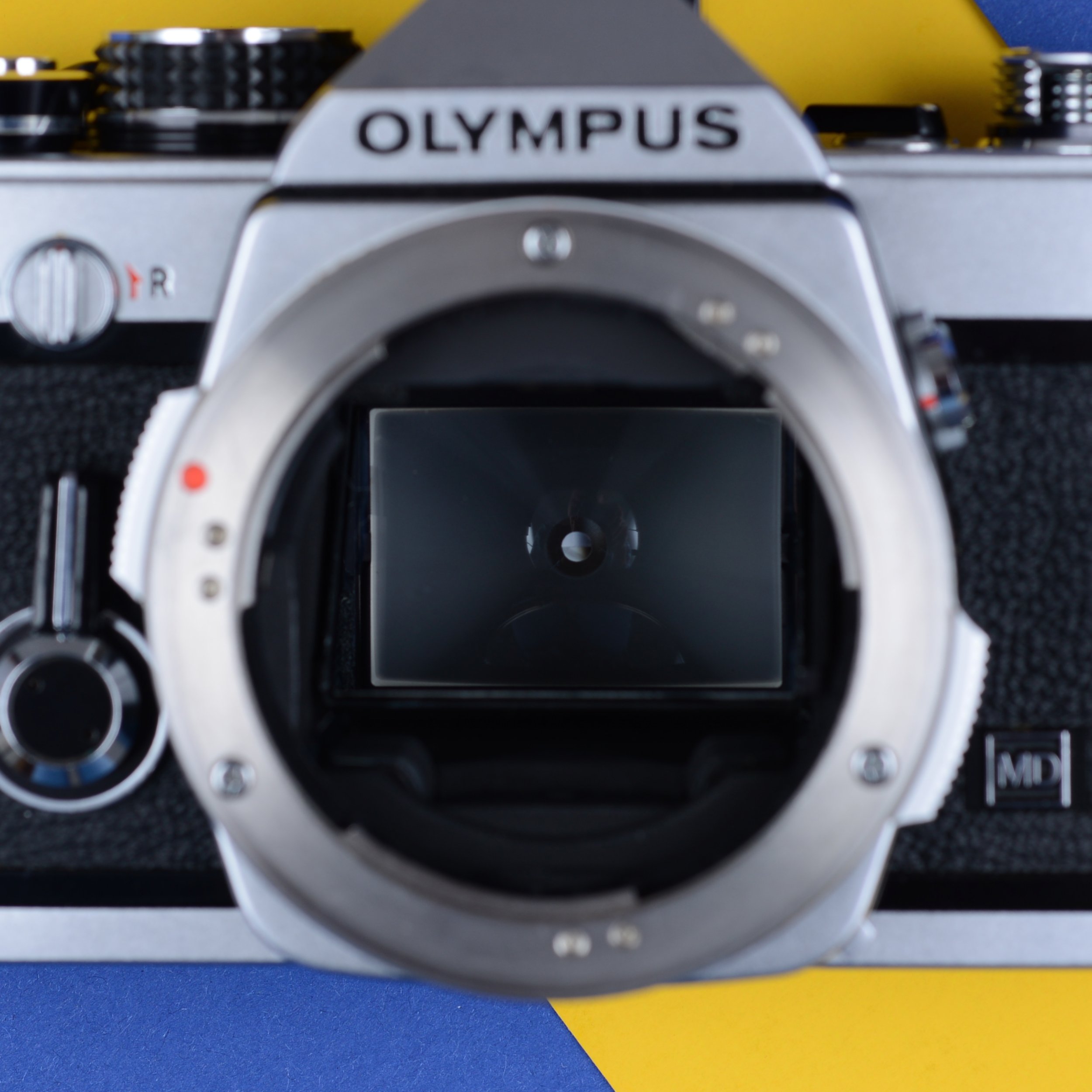Olympus OM-2N
Introduction
The Olympus OM-System was conceived by legendary camera designer Yoshihisa Maitani to be the most compact professional SLR-system capable of capturing everything from “space to bacteria”.
The OM-2N went on sale in 1979, being an updated version of the OM-2. It is the electronically controlled sister of the Olympus OM-1(N).
The Olympus OM-2N is the first serious camera I ever owned. It was gifted to me by my father at the age of ten.
The Olympus OM-2N
Review
Key Specifications
35mm SLR introduced in 1979
OM-mount
Electronically controlled shutter with speeds from 1s to 1/1000 and bulb
Exposure modes: Manual, Aperture priority
Center-weighted TTL exposure metering (battery operated) combined with the unique off the film (OTF) system
Flash sync speed 1/60
Requires two LR44 batteries
Build Quality and Design
The Olympus OM-2N follows the clear design language defined by its progenitor, the Olympus OM-1.
It is a very well made camera that feels almost like a Leica M camera.
Viewfinder and Focusing Screen
The Olympus OM-2N’s viewfinder provides a coverage of about 97% with a magnification of 0.92.
The viewfinder image is bright and clear, thanks to the high quality focusing screen. Only newer cameras like the Olympus OM-3Ti (type 2-13) or the Nikon FM3A (type K3) provide a significantly better viewing experience.
The controls displayed through the viewfinder are minimalist but sufficient. A small needle on the left side indicates the current shutter speed when in AUTO mode. The aperture is not displayed in the viewfinder.
Inside the Olympus OM-2Ns mirror box.
Exposure System and Flash Metering
The Olympus OM-2N is often disregarded in favor of the fully mechanical Olympus OM-1. This is quite intriguing because thanks to its (for the time) revolutionary electronics it has a very capable exposure control system.
When set to “AUTO”, the camera operates in aperture priority. What makes it so special is the fact that the exposure system continues to meter during the exposure itself, metering off the film surface (OTF). Should the lighting scenario change unexpectedly, the camera will decrease or increase the exposure time automatically.
The true strength of this system becomes obvious when the OM-2N is used in conjunction with an Olympus T32 flash. During the exposure, the camera meters the flash output through the lens and cuts off the flash exposure at exactly the right moment. In practice, this leads to well balanced and reliable flash exposures. The system is not negatively impacted by bounce flash or ambient light. It is quite incredible.
Of course the OM-2N steplessly adjusts shutter speeds.
Olympus OM-2N rear view. The flash shoe 4 is detachable.
Controls
The shutter speed is controlled with an easy-to-reach control ring at the base of the lens mount, while the aperture control ring is located on the front of the OM-lenses. Rotating the aperture ring to the left closes the aperture, while rotating the shutter speed dial to the right increases the exposure time. Small details like this show the well thought-out design.
The mechanically operated self-timer switch is located on the front.
Most other controls are located on the top panel.
Olympus OM-2N - top panel
The lever on the top left turns has four settings:
OFF turns the meter off. However, if the shutter is fired in this setting, the OTF-system will nonetheless work and ensure a correct exposure.
AUTO sets the camera to aperture priority.
CHECK RESET activates the battery check function (indicated by a red light on the back of the camera) and also resets the mirror.
MANUAL switches the camera to a regular manual mode and deactivates the OTF-system, except when exercising flash photography with a compatible Olympus flash like the T32.
On the right side is an exposure compensation dial that also allows the setting of shutter speeds by lifting it up.
It is important to note that the camera won’t work without any batteries. So always bring two spare LR44s with you.
Reliability and Known Issues
There are no newly produced parts available for the OM-2N.
Interestingly, the OM-2N is a highly reliable camera that can mostly be fixed without the need for spares.
A relatively unknown issue is prism damage, which is often mistaken for dust in the finder. Small foam pieces were used to provide some sort of padding between the prism and the metal housing. The original foam pads are degrading and through the degradation process, the prism is damaged irreparably. However, the issue can be spotted easily when looking through the viewfinder. Black spots that look like dust and do not disappear when cleaning the mirror box and focusing screen stem from such a damaged prism. Only an undamaged prism from a donor camera can help. If the damage is not excessive, a simple replacement of the degraded foam by an expert repairman will at least stop further damage to the prism.
In any case, I highly recommend sending a newly bought Olympus OM-2N to an expert if the previous owner cannot specify when the camera was serviced last time or whether the foam pads around the prism were replaced or not.
Consider the Germany-based Olympus OM-expert Gordon Friedrich: OM-Labor
Olympus OM-2N bottom view. The Olympus OM-2N can be equipped with an Olympus Winder 2 which communicated with the camera via the contacts on the right.
Conclusion
The Olympus OM-2N is an inexpensive entry ticket into the OM System.
Thanks to its – unjustified – underdog status the prices are quite reasonable. Being one of the most reliable electronically controlled SLRs ever made makes it a solid choice.
Don’t hesitate to get an OM-2N instead of another camera of the OM System. It does everything the other models do (and sometimes even more) for a fraction of the price.





